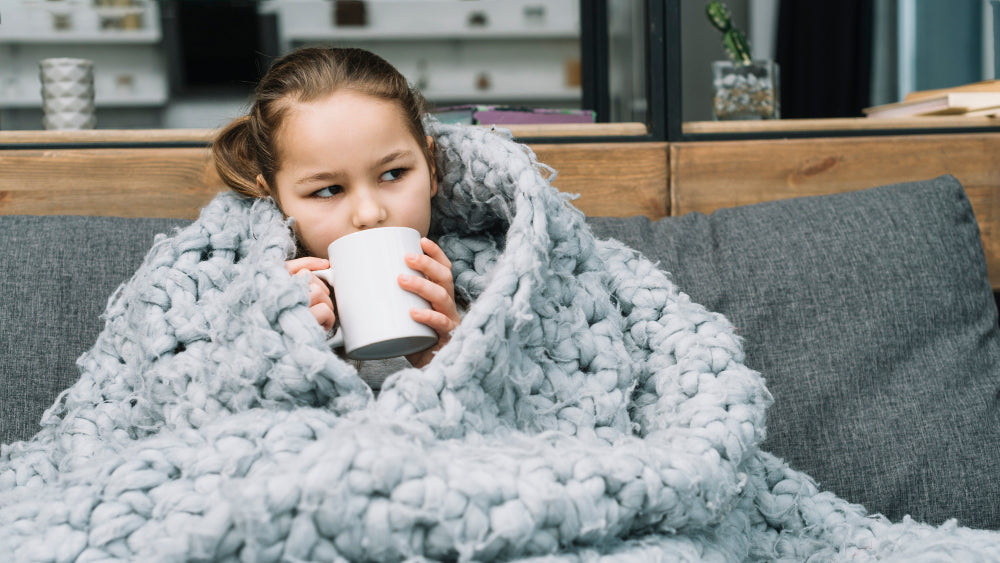Are you a new parent and stressing about how to dress an infant in winter? We get it. It is a common concern of many parents who want to keep their children safe and healthy on chilly days.
While being so conscious about the baby’s dressing in winter, sometimes parents overdress them, and the baby starts feeling hot despite the cold weather.
But if their dressing is light, they may start feeling too cold. So, in addition to learning how to dress a newborn in winter, you need to be aware of the signs that indicate if your baby is uncomfortable in the clothes.
In this guide, we will help you learn the signs of your baby being too hot or too cold. You will also learn how to dress them properly to keep them cozy throughout the frosty season.
Signs Your Baby is Feeling Cold
It can be difficult to say if your baby is too cold because they cannot communicate directly. However, there are a few key signs you can watch for:
- Cold Hands and Feet: If your baby’s hands and feet feel cold to the touch and stay that way for some time, it could indicate they’re too cold.
- Pale or Blotchy Skin: If your baby’s skin turns pale or blotchy on the face or chest, it could be a sign that they are too cold.
- Shivering or Trembling: Though babies do not shiver as much as adults, they may still tremble or shiver if they are exposed to extreme cold.
- Excessive Crying: If your baby is crying more than usual and you are unable to comfort them by typical soothing methods, this could be a sign that they are uncomfortable due to the cold.
What to Do If Your Baby Feels Too Cold
- Add one more layer of clothing to raise their body temperature.
- Cover their hands, feet, and head with warm mittens, socks, and a snug hat.
- If outside, move your baby to a warmer environment as soon as possible.
- Hold your baby in your arms or use a baby carrier to transfer warmth from your body to theirs.
- You can also cover them with a soft fleece blanket, but avoid over-layering.
Signs Your Baby is Too Hot

If your baby is overdressed and they are feeling too hot, you may notice the following signs in them:
- Flushed Skin and Redness: If your baby’s skin becomes red or flushed, they may be too hot. It usually happens on the face, neck, and chest.
- Sweating and Damp Hair: Excessive sweating around the neck or on their hair is a clear sign that your baby is getting too warm.
- Rapid Breathing: If your baby’s breathing seems fast and shallow, it may be a sign that their body is trying to cool itself down.
- Disrupted Sleep Patterns: If your baby is having trouble sleeping, tossing and turning, it might be due to being too warm.
What to Do If Your Baby Feels Too Hot
- Remove a layer of clothing or blanket to allow your baby to cool down.
- Make sure that your baby’s environment is comfortable. The ideal room temperature for a baby is between 68°F and 72°F (20°C - 22°C).
- If your baby is older than six months, offer water or breast milk to stay hydrated.
- You can also gently wipe your baby’s skin with a cool and damp cloth.
How to Dress a Baby in Winter

When you start dressing your baby in winter, remember the one more layer rule. According to it, you should dress your baby in one more layer than you would wear.
For example, if you’re wearing a coat, your baby might need a jacket plus a sweater underneath.
Here is the breakdown of different types of layers you need to consider when dressing your baby for winter:
Base Layer
First, use a base layer to keep your baby dry and comfortable. But as babies’ skin is more sensitive than adults’, you should choose fabrics carefully.
Ideal Materials for Base Layers:
- Cotton
- Merino Wool
- Synthetic Fabrics (e.g., polyester blends)
Examples of Base Layers:
- Long-sleeve bodysuits
- Oneseis
- Thermal leggings
- Cotton tops
- Wool or cotton footed pajamas.
Mid Layers
After the base layer, wrap your baby in a mid layer. This layer gives additional warmth to your baby without causing them to sweat.
Ideal Materials for Mid Layers:
- Fleece
- Cotton sweater
- Light wool
Examples of Mid Layers:
- Fleece zip-up jackets
- Hoodies
- Wool sweaters
- Cardigans
- Padded jackets or vests
Outer Layers
To further protect your baby from the cold and wind, you can cover them in an outer layer. This layer is windproof and resistant to moisture, so your baby remains warm no matter the weather conditions.
Ideal Materials for Outer Layers
Waterproof and Windproof Fabrics: Materials like nylon, polyester, Fleece-lined or Wool-lined Materials
Examples of Outer Layers:
- Insulated puffer jacket.
- Fleece-lined coat
- Snowsuits
Accessories
In addition to layering clothes, some accessories are essential for keeping your baby warm through their head, hands, and feet. These accessories include:
- Hats
- Mittens or Gloves
- Socks or Booties
- Scarf or Neck warmer
Conclusion
By understanding how to dress baby for cold weather and recognizing the signs that they are too hot or too cold, you can ensure they stay comfortable and cozy throughout the colder months.
Always begin with breathable base layers, followed by insulating mid-layers. Then, add a weather-resistant outer layer to protect against the elements. Don’t forget to use accessories like hats, mittens, and warm socks to cover their head, hands, and feet.
For the best results, consider dressing your baby in high-quality clothing from trusted brands like Magickal Wear to keep them warm and comfortable all winter long.


